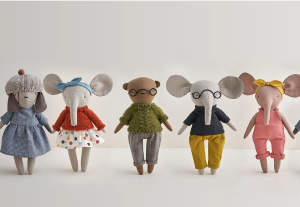I’ve been thinking about taste, and what it means to brands and experience. It is, I would argue, fundamental to a brands success in our times. Let me explain.
Taste is a core and necessary ingredient of culture.
Taste by definition, is the ability to discern what is of high quality or of a high aesthetic standard. We use it broadly to describe one who has an ability to make the right decisions – what is right, good, fashionable. While taste can be very personal and subjective, it also transcends the individual or tribe. Taste is a core and necessary ingredient of culture. It is the glue, a shared understanding that holds a group of people together. Taste is mass.
Not everyone has it, of course. Many recognize it. Few exercise it. Still fewer define it. It is by its nature, exclusive and aspirational. This is what makes taste so valuable.
Taste is about what and how, but mostly how. Lots of quality cars get you from A to B, MP3 players play music; but the tasteful how enables a brand to capture a premium over a comparable functional offering. A product that exhibits good taste is prized in particular for it associative value – that is, what it says about you and how it connects you to a group. And taste endures. Consider some of the bastions of taste who continue to create value – Eames, Nelson, even Martha Stewart, a pioneer in the pure taste space and one whose brand has shown remarkable resilience.
As Martha has shown, taste is also the lens. We rely on those whose taste we trust to act as our agents or navigators. Taste is about understanding what is important and what is not. Taste is the edit. In a world where we are overwhelmed by choice, this is valuable indeed.
And taste is becoming more important as consumption decisions become moral choices. Value is increasingly driven by a product’s content and as such the taste premium is rising. This is why transparency into how choices are made is becoming more important to our purchase decisions. Increasingly good taste amounts to making choices that are good for the world, our environment, for people.
Apple is the ultimate taste brand – and what makes it so remarkable is it is a taste brand in an industry defined by function not taste. Target has transformed itself into a taste brand. Mini is a taste brand. Sony was one. Motorola is trying to become one. All demonstrate the mass opportunity of leveraging taste as a differentiator. Moreover, the great thing about being a taste brand is once you have it, it gives you permission to broaden your offer in many ways. Good taste transcends. That trust is something you can rely on to move in lots of directions. We’d love to see how Apple approaches the wireless phone. How about a car or a house?
The question is: why do some have it while others don’t? In many organizations, taste is in the DNA, carried by founders and those they bring into the fold. In some cases, companies try to buy taste, from branding agencies and the like. But maybe you can’t just put taste on like a sharp designer suit. Isn’t it core to how daily decisions are made day in and out? Is it impossible to buy? Obviously, many companies succeed in spite of this. Dell and Wal-Mart have bad taste but it hasn’t mattered much. They succeed for other reasons as many companies do. But, as their competitors become more tasteful, as the competitive dynamics change, what role will taste play?
Could we develop a taste index to understand who has it and what its worth? Should taste fall under the purview of the CMO. Should organizations bring on Chief Taste Officers to help them and their customers understand what is and is not tasteful?




